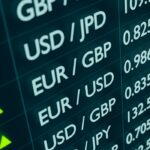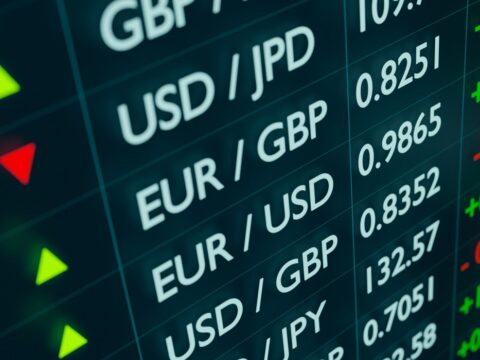
2025-2026 Forex Market Outlook: Key Currency Pairs to Watch
June 7, 2025A 2025-Focused Look into Fed, ECB, and BoJ Strategies
The foreign exchange (forex) market is the world’s largest financial marketplace, with over $7.5 trillion traded daily.
In 2025, central bank policies remain the dominant force driving currency valuations, creating both volatility and opportunity for traders.
The Federal Reserve (Fed), European Central Bank (ECB), and Bank of Japan (BoJ) each have distinct monetary strategies that shape forex trends in unique ways.
For traders in the United States and Europe, understanding these policies is essential for navigating the forex market effectively.
This in-depth analysis explores the latest forex information, examines how central bank decisions impact major currency pairs, and provides actionable strategies for trading forex in 2025 and beyond.
1. The Federal Reserve’s Strategy and the US Dollar’s Dominance
The Fed’s monetary policy has far-reaching implications for global forex markets. In 2025, the Fed faces a delicate balancing act—keeping inflation in check while avoiding an economic slowdown.
Fed Policy Breakdown: Interest Rates, QT, and Forward Guidance
Interest Rate Policy in 2025
After a series of aggressive rate hikes in 2023-2024 (peaking at 5.50%-5.75%), the Fed has paused further increases but maintains a “higher for longer” stance.
Inflation has cooled to around 2.8% (as of Q2 2025), but core inflation remains sticky due to rising service sector costs.
- Potential Rate Cuts? The Fed has signaled that any rate reductions will be data-dependent. If unemployment rises above 4.5% or GDP growth slows significantly, cuts could begin in late 2025 or early 2026.
- Hawkish vs. Dovish Signals: Traders scrutinize every Fed statement—hints of prolonged high rates strengthen the USD, while dovish remarks weaken it.
Quantitative Tightening (QT) and Its Market Impact
The Fed continues shrinking its balance sheet by $95 billion per month, reducing liquidity in financial markets. This tightening supports the USD but increases borrowing costs globally.
- Effect on Forex: Reduced dollar supply makes the USD more valuable, benefiting pairs like EUR/USD and GBP/USD for short sellers.
- Risk of Over-Tightening: If QT leads to a liquidity crunch, the Fed may pause or reverse course, triggering USD volatility.
Economic Indicators to Watch
- Non-Farm Payrolls (NFP): Strong job growth = stronger USD.
- Core PCE Inflation: The Fed’s preferred inflation gauge.
- Retail Sales & Manufacturing Data: Indicates economic health.
Trading the USD in 2025: Strategies & Opportunities
- Long USD Positions: Favored while rates stay high.
- Short EUR/USD or GBP/USD: If the Fed stays hawkish and the ECB/BoE lags.
- Event-Driven Trading: Fed meetings and Powell’s speeches create short-term volatility.
2. The European Central Bank’s Struggle with Stagnation and the Euro’s Fate
The ECB faces a tougher challenge than the Fed—Eurozone growth remains sluggish, and inflation is uneven across member states.
ECB Policy Deep Dive: Rates, PEPP, and Fragmentation Risks
Interest Rate Dilemma
The ECB raised rates to 4.25% in 2024 but kept them steady in 2025. This was due to weak GDP growth, just 0.6% in Q1 2025.
- Divergence from the Fed: The ECB cannot hike further without risking recession. This keeps the EUR weaker than the USD.
- Potential Cuts in 2026? If inflation falls below 2%, the ECB may cut before the Fed. This could further press the Euro.
Pandemic Emergency Purchase Programme (PEPP) & Bond Market Risks
The ECB continues to reinvest maturing PEPP bonds. This supports weaker economies like Italy and Spain.
- Fragmentation Risk: If Italian bond yields spike, the ECB may intervene. This could weaken the Euro.
- Impact on EUR/USD: Political instability in Europe (e.g., French elections) adds downside risk.
Key Eurozone Economic Data
- German IFO Business Climate Index: This leading indicator shows EU growth.
- Eurozone CPI: Core inflation remains at 2.9% (above target).
- Unemployment Rates: Rising joblessness could force ECB cuts.
Trading the Euro in 2025: Tactical Approaches
- Short EUR/USD on ECB Dovishness: The rate gap with the USD favors dollar strength.
- Long EUR/GBP if BoE Cuts First: The UK economy is also struggling.
- Watch Political Risks: EU elections and fiscal disputes can spark volatility.
3. The Bank of Japan’s Ultra-Loose Policy and the Yen’s Future
The BoJ remains the last major central bank clinging to negative rates. Pressure is building for a policy shift.
BoJ Policy Analysis: YCC, Inflation, and the Weak Yen Problem
Yield Curve Control (YCC) and Negative Rates
The BoJ maintains its -0.10% rate and caps 10-year JGB yields at 1.0%.
- Yen Carry Trade: Investors borrow cheap JPY to invest in higher-yielding assets (e.g., USD bonds).
- Intervention Risks: The BoJ spent $60B in 2024 to prop up the Yen—more interventions are possible if USD/JPY nears 160.
Inflation & Wage Growth: Is Change Coming?
Japan’s inflation hit 3.2% in 2024 but has cooled to 2.4%.
- “Shunto” Wage Hikes: 2025’s wage negotiations saw 5%+ increases, fueling speculation of BoJ tightening.
- End of Negative Rates? If inflation stays above 2%, the BoJ may hike in late 2025—a major JPY bullish signal.
Trading the Yen: High Risk, High Reward
- Short USD/JPY on BoJ Policy Shifts: A rate hike could trigger a 5-10% JPY rally.
- Carry Trade Caution: If global risk sentiment sours (e.g., stock crash), JPY surges as traders unwind positions.
- Watch for Intervention: Sudden BoJ moves can cause sharp reversals.
4. Advanced Forex Trading Strategies for 2025-2026
Multi-Timeframe Analysis
- Daily Charts for Trend: Is the USD in a long-term uptrend?
- 4-Hour/1-Hour for Entries: Fine-tune trades around key levels.
Correlation Trading
- USD & Oil: A strong USD often weakens crude prices (inverse correlation).
- Gold & Real Yields: Higher real rates = weaker gold (and vice versa).
Risk Management Essentials
- Never Risk More Than 1-2% Per Trade.
- Use Trailing Stops to Lock in Profits.
- Avoid Overtrading—Wait for High-Probability Setups.
5. The Best Forex Opportunities in 2025-2026
Top Currency Pairs to Watch
- EUR/USD: Fed vs. ECB policy divergence.
- USD/JPY: BoJ intervention risks.
- GBP/USD: UK recession risks vs. USD strength.
Emerging Market Currencies with Potential
- Mexican Peso (MXN): Strong carry trade candidate.
- Indian Rupee (INR): RBI’s tight policy supports INR.
Final Outlook: Preparing for 2025-2026 Forex Trends
Central banks will continue driving forex markets in 2025, but traders must stay adaptive. Key takeaways:
✅ Fed Policy Rules the USD—Watch for rate cut signals.
✅ ECB Trails the Fed—EUR/USD downtrend may persist.
✅ BoJ is the Wildcard—A policy shift could shock markets.
Central banks remain the driving force behind forex movements. The Fed’s cautious stance, the ECB’s struggle with growth, and the BoJ’s ultra-loose policies create trading opportunities—but also risks.
Successful traders stay informed, use proven strategies, and manage risk carefully. By following the latest forex information and adapting to policy shifts, traders in the US and Europe can navigate 2025-2026 with confidence.
For more insights and the latest forex trading updates, visit ForexSmartStart.com. Stay ahead of the markets and make smarter trading decisions!
Disclaimer
The information, strategies, techniques and approaches discussed in this article are for general information purposes only. Latest Forex Rates does not necessarily use, promote nor recommend any strategies discussed in this article. The information in this article may not be suitable for your personal financial circumstances and you should seek independent qualified financial advice before implementing any financial strategy.


